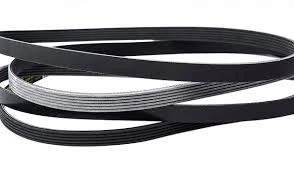- Arabic
- French
- Russian
- Spanish
- Portuguese
- Turkish
- Armenian
- English
- Albanian
- Amharic
- Azerbaijani
- Basque
- Belarusian
- Bengali
- Bosnian
- Bulgarian
- Catalan
- Cebuano
- Corsican
- Croatian
- Czech
- Danish
- Dutch
- Afrikaans
- Esperanto
- Estonian
- Finnish
- Frisian
- Galician
- Georgian
- German
- Greek
- Gujarati
- Haitian Creole
- hausa
- hawaiian
- Hebrew
- Hindi
- Miao
- Hungarian
- Icelandic
- igbo
- Indonesian
- irish
- Italian
- Japanese
- Javanese
- Kannada
- kazakh
- Khmer
- Rwandese
- Korean
- Kurdish
- Kyrgyz
- Lao
- Latin
- Latvian
- Lithuanian
- Luxembourgish
- Macedonian
- Malgashi
- Malay
- Malayalam
- Maltese
- Maori
- Marathi
- Mongolian
- Myanmar
- Nepali
- Norwegian
- Norwegian
- Occitan
- Pashto
- Persian
- Polish
- Punjabi
- Romanian
- Samoan
- Scottish Gaelic
- Serbian
- Sesotho
- Shona
- Sindhi
- Sinhala
- Slovak
- Slovenian
- Somali
- Sundanese
- Swahili
- Swedish
- Tagalog
- Tajik
- Tamil
- Tatar
- Telugu
- Thai
- Turkmen
- Ukrainian
- Urdu
- Uighur
- Uzbek
- Vietnamese
- Welsh
- Bantu
- Yiddish
- Yoruba
- Zulu
Dec . 06, 2024 00:40 Back to list
V-Belt Options for Toyota Hiace Maintenance and Replacement
Understanding the Importance of V-Belts for Toyota Hiace A Comprehensive Guide
The Toyota Hiace has long been a favorite among businesses and individuals alike. Known for its spacious interior, rugged design, and reliability, this van is often used for public transport, delivery services, and family outings. Yet, like all vehicles, the Hiace requires regular maintenance to ensure it runs efficiently and lasts for years. One key component of this maintenance is the V-belt, which plays a crucial role in the vehicle’s engine performance.
What is a V-Belt?
A V-belt is a type of belt used in various machinery, including vehicles, to transmit power from the engine to various components. In the case of the Toyota Hiace, the V-belt is essential for driving the alternator, water pump, power steering pump, and air conditioning compressor. If the V-belt is worn or fails, it can lead to a host of problems, including overheating, loss of steering capability, and failure of electrical systems.
Signs of a Worn V-Belt
One of the key aspects of vehicle maintenance is knowing when to check the V-belt for signs of wear. A squeaking or chirping noise when the engine is running may indicate that the V-belt is slipping or becoming detached. Additionally, visible cracks or fraying on the belt are clear indicators that it needs to be replaced. If you notice any leaking fluids, particularly coolant, it may suggest that the water pump is not functioning effectively, potentially due to a damaged V-belt.
Replacement Schedule
for toyota hiace v-belt

Toyota recommends checking the V-belt during routine maintenance, typically every 30,000 miles or two years, whichever comes first. However, if you frequently drive in extreme conditions—such as heavy traffic, hot climates, or off-road environments—you might need to inspect the belt more regularly. It’s always a good practice to refer to the vehicle’s owner manual for specific guidance on maintenance intervals.
Choosing the Right V-Belt
When it comes to replacing the V-belt on a Toyota Hiace, it’s critical to select the right type of belt for your specific model. There are different variants of V-belts available in the market, including OEM (Original Equipment Manufacturer) belts and aftermarket options. While OEM belts may come with a higher price tag, they are specifically designed to fit and perform optimally in your Hiace. On the other hand, aftermarket belts may offer cost savings but could vary in quality.
Installation Tips
If you decide to replace the V-belt yourself, it’s essential to follow the proper procedure to avoid any issues. First, gather the necessary tools, including a socket set, a wrench, and a belt tension gauge. Always ensure you disconnect the battery before starting any maintenance work. Once you’ve removed the old belt, check the pulleys for wear and tear; they should be clean and free of debris. Installing the new belt requires attention to detail, making sure it’s seated properly on each pulley and has the correct tension.
Conclusion
In summary, the V-belt is an indispensable component of the Toyota Hiace's engine system. Regular inspection and timely replacement can help prevent significant issues, ensuring that your vehicle remains operational and efficient. Whether you’re a business relying on the Hiace for deliveries or a family using it for daily commutes, maintaining your V-belt is key to enjoying a safe and hassle-free driving experience. Always consult your vehicle's manual and, when in doubt, seek assistance from a professional mechanic to keep your Hiace running smoothly.
-
Upgrade Power Steering Pump Belt for Smooth, Quiet Operation
NewsAug.27,2025
-
Precision Timing Belt & Chain: Engine Performance & Durability
NewsAug.26,2025
-
Precision Lathe Drive Belts: Durable & Reliable Performance
NewsAug.25,2025
-
84.5 Serpentine Belt: Durable & Precision Fit for Your Engine
NewsAug.24,2025
-
Premium Ribbed Drive Belts for Quiet Power Transmission
NewsAug.23,2025
-
High-Performance Vehicle Timing Belt for Engine Precision
NewsAug.22,2025

